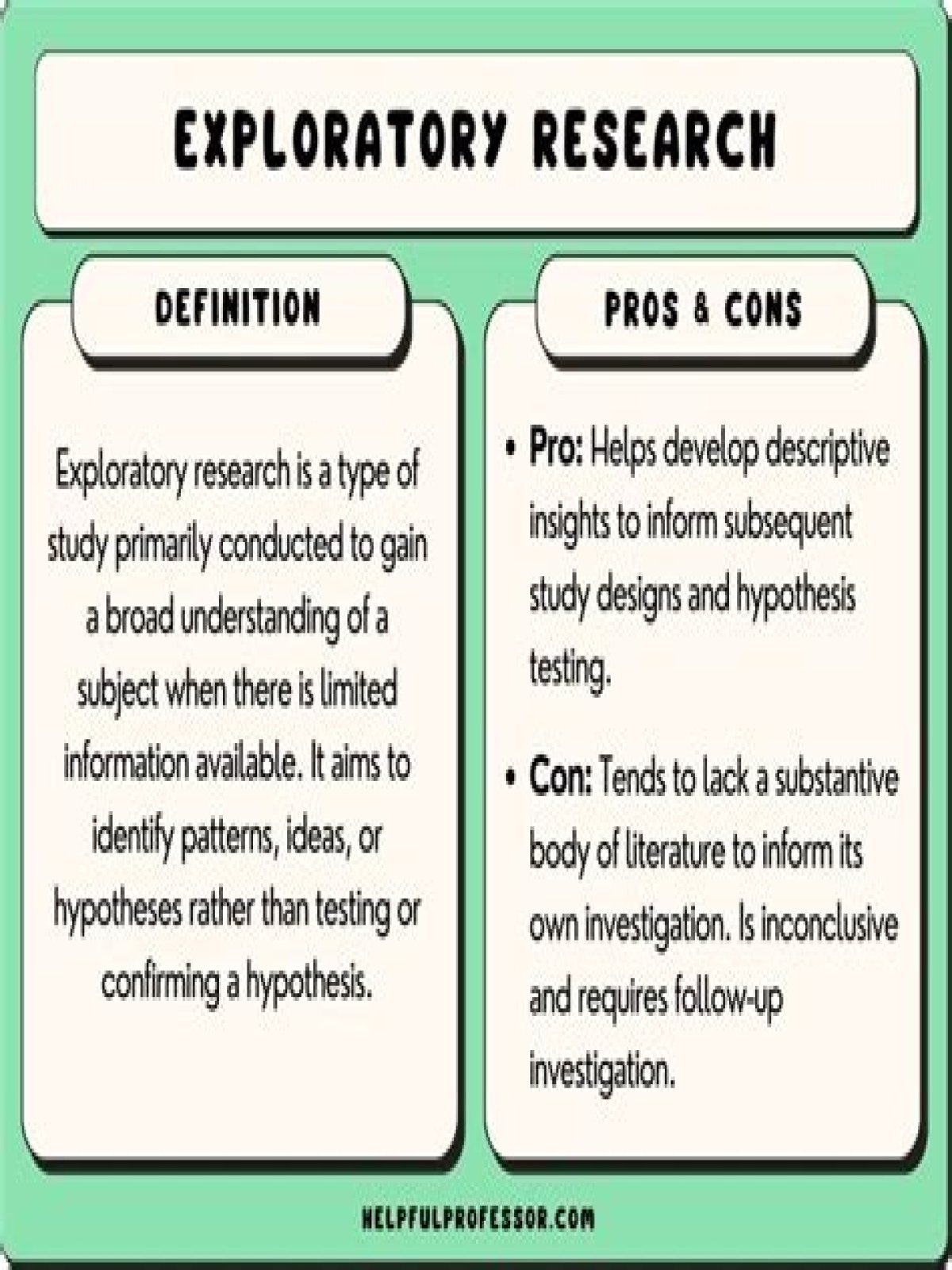Exploratory research is defined as a research used to investigate a problem which is not clearly defined. It is conducted to have a better understanding of the existing problem, but will not provide conclusive results. Such a research is usually carried out when the problem is at a preliminary stage.
What is an example of exploratory research?
The following are some examples for studies with exploratory research design in business studies: A study into the role of social networking sites as an effective marketing communication channel. An investigation into the ways of improvement of quality of customer services within hospitality sector in London.
What is the main purpose of exploratory research?
The goal of exploratory research is to formulate problems, clarify con- cepts, and form hypotheses. Exploration can begin with a literature search, a focus group discussion, or case studies.
What is exploratory and descriptive research?
Exploratory research is one which aims at providing insights into and an understanding of the problem faced by the researcher. Descriptive research, on the other hand, aims at describing something, mainly functions and characteristics.
What are the characteristics of exploratory research?
Characteristics of Exploratory Research
- Exploratory research is inexpensive, interactive, unrestricted, and open-ended in nature.
- It is an unstructured type of research.
- No pre-research is conducted to support exploratory research and even there is no prior information available on the problem from the past research.
How do you do exploratory research?
Market Research Steps
- Define the Problem. All research problems generally start in the same place: identifying the issue at hand.
- Choose a Method.
- Create Research Procedures.
- Collect Data.
- Determine Results.
Is exploratory research easy?
Exploratory research is inexpensive, highly interactive and open-ended in nature. There is usually no prior relevant information available from past researchers. It has no predefined structure. It answers questions like how and why aiding the researcher to acquire more information about the research.
Why exploratory research is flexible?
Exploratory research design is chosen to gain background information and to define the terms of the research problem. This is used to clarify research problems and hypotheses and to establish research priorities. Exploratory research is flexible and provides the initial groundwork for future research.
How exploratory research is flexible?
Exploratory research is flexible and provides the initial groundwork for future research. Exploratory research requires the researcher to investigate different sources such as published secondary data, data from other surveys, observation of research items, and opinions about a company, product, or service.
What are the steps in the exploratory approach?
Is a survey exploratory research?
When it comes to online surveys, the most common example of exploratory research takes place in the form of open-ended questions. Think of the exploratory questions in your survey as expanding your understanding of the people you are surveying.
What are the features of exploratory research?
Where is exploratory research used?
Exploratory research is used when the topic or issue is new and when data is difficult to collect. Exploratory research is flexible and can address research questions of all types (what, why, how). Exploratory research is often used to generate formal hypotheses.
How do you conduct exploratory research?
What are the 2 major types of research?
The research is broadly classified into two main classes: 1. Fundamental or basic research and 2. Applied research. Basic and applied researches are generally of two kinds: normal research and revolutionary research.
What are the 5 types of research design?
Note that your research problem determines the type of design you can use, not the other way around!
- General Structure and Writing Style.
- Action Research Design.
- Case Study Design.
- Causal Design.
- Cohort Design.
- Cross-Sectional Design.
- Descriptive Design.
- Experimental Design.
